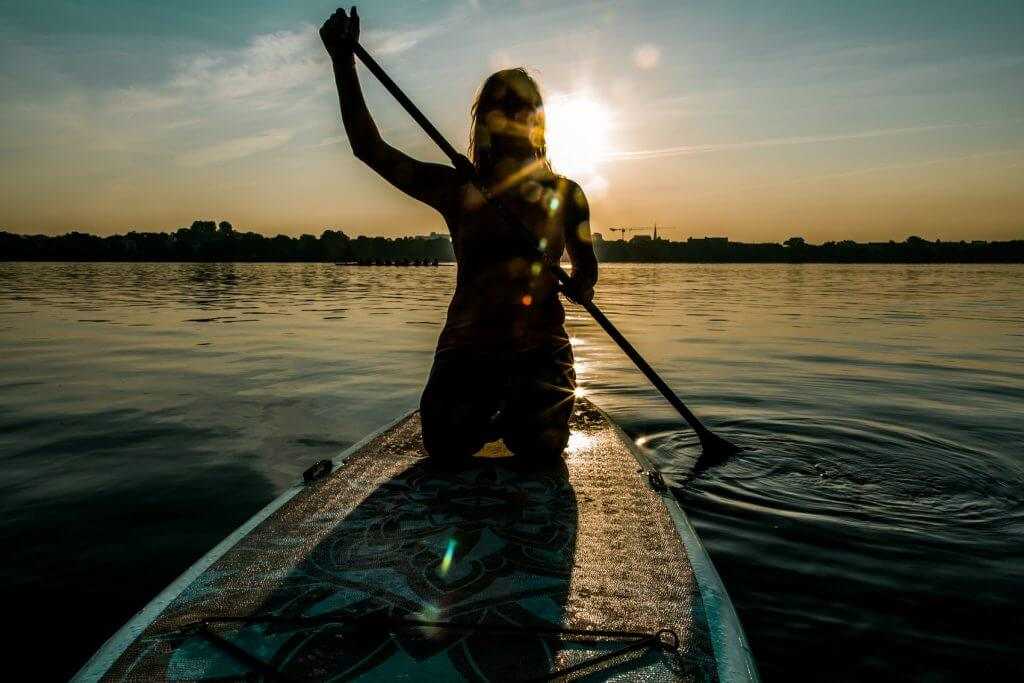
Safety First
8 Important Rules
Rule #1
BASIC RULES
Every SUP rider has to behave on water in such a way, that no one is endangered or harmed with the given circumstances. To prevent an imminent danger, measures may have to be taken that may deviate from the following regulations.
Rule #2
RIDING ON THE RIGHT
Like all watercrafts, SUPs should take the right side in the direction of travel of their fairway. In exceptional cases, the Alster can be driven in both directions along the west and east banks.
Rule #3
DUTY TO DOGE
Commercial boats or ships always have priority. Sports and rowing boats must not hinder these ships and tugs. Small vehicles, without machine drive and not under sail (SUPs and rowing boats, for example), have to avoid small vehicles that sail. SUPs must turn to starboard in time or, if that is not possible, clearly indicate how they want to avoid them.
Rule #4
MEET AND CROSS
Rule of thumb: "Right before left." But be careful: commercial shipping always has priority as stated above. If two watercrafts meet on exactly or almost opposite courses, both boats have to turn to starboard so that they can use their port sides pass each other. The right-before-left rule applies to crossing courses. If the courses of two vehicles cross, the one on the left must give priority to the other, while the boat on starboard must continue its course.
Rule #5
RIDING THROUGH NARROW SPOTS
Another Rule of thumb: "Descent before ascent." But be careful: never rely on the other person knowing the rule! In the case of bridges with several openings, the right one should be selected, if necessary the middle one can also be used. But never the left one! Pay attention to shipping signs. When sports boats meet at a narrow point that does not allow enough space for a simultaneous passage, the boat that has the right of way has the right of way.
Rule #6
COLLISION PREVENTION
If a person with right of way has come so close to the person who is obliged to evade that he cannot help avoid a collision, the person with right of way must maneuver in the way that is most useful for avoiding a collision ("last-minute maneuvers"). Those entitled to drive in, who are involved in a collision and are still required to provide evidence that they have exhausted all the options available to them to avoid an accident, face the charge of complicity - with corresponding legal consequences. Immediately after an accident, a protocol must be drawn up between all those involved.
Rule #7
CROSSING WATERWAYS
All vehicles, including rowing boats, may only cross a waterway if they have previously verified that other vehicles (including small vehicles such as canoes or pedal boats) are not endangered by this maneuver or are forced to change direction or speed abruptly.
Rule #8
OVERTAKING
Overtaking is only permitted if circumstances permit and any risk to others is excluded. Basically you have to overtake on the left. Commercial boats may only be driven past if they stop.